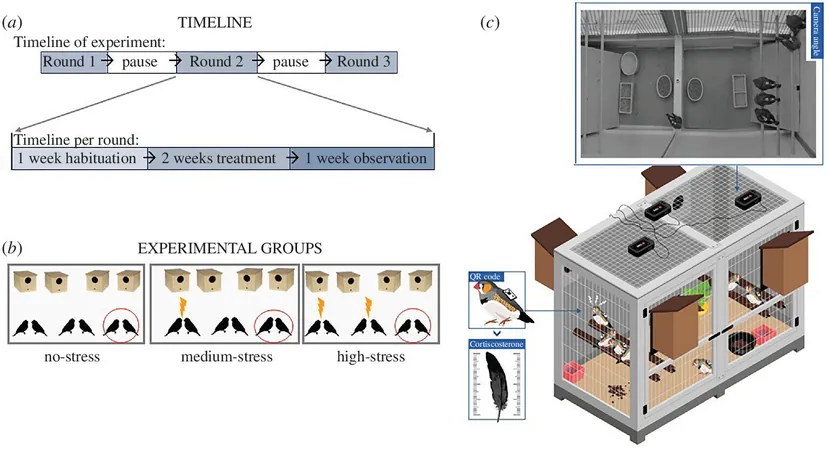
Revolutionary FDA-Approved Drug Offers New Hope for Rare Genetic Disorders!
2024-11-14
Author: Nur
Breakthrough Research by McMaster University
In an exciting breakthrough from McMaster University, researchers have unearthed a potential treatment for two rare and often devastating lysosomal storage disorders: Sandhoff and Tay-Sachs diseases. These conditions lead to progressive nerve cell damage in the brain and spinal cord, and their grim realities have left many families desperate for effective treatments.
Published Findings in Human Molecular Genetics
Published in the esteemed journal *Human Molecular Genetics*, the researchers' findings illuminate a path toward improving the quality of life for those affected by these life-threatening disorders. Professor Suleiman Igdoura, a dedicated expert in biology and pathology, expressed the heartbreak felt by families grappling with these diseases. "The symptoms are harrowing—patients can lose the ability to sit, stand, swallow, and even breathe as their neurons deteriorate. It’s a heartbreaking situation that no family should endure."
Understanding Tay-Sachs and Sandhoff Diseases
Tay-Sachs disease, one of the more prevalent conditions, usually presents in infants within the first year of life and can quickly become fatal within just a few years. However, in some cases, particularly in Sandhoff disease, symptoms can emerge later, offering a longer but still severely challenging journey for those affected.
Challenges Faced by Families
“Hospitalization often becomes a grim reality as symptoms worsen, leaving families with minimal treatment options,” Igdoura notes. “But our research brings a glimmer of hope.”
Key Discoveries and Insights
The study's pivotal insights stemmed from investigating late-onset cases of these disorders. The researchers discovered that chronic stress in the spinal cord's endoplasmic reticulum triggers a cascade of cellular events that culminate in programmed cell death. This understanding of disease progression proved critical, leading them to explore existing therapies.
The Promise of 4-Phenylbutyric Acid (4-PBA)
Their findings pointed to 4-phenylbutyric acid (4-PBA), an FDA-approved drug originally developed for a different condition. In preclinical trials conducted on mouse models, 4-PBA exhibited remarkable potential, demonstrating enhanced motor function, prolonged lifespan, and an increase in healthy motor neurons.
Future Research and Broader Implications
Igdoura’s lab stands as one of the few worldwide focusing on Sandhoff and Tay-Sachs diseases. He expressed optimism about the transformative potential that repurposed drugs like 4-PBA might hold for patients. “We hear tragic stories from families around the globe, and presenting an FDA-approved drug for off-label use could significantly enhance life expectancy and quality of life for these patients,” he stated.
Next Steps in Research
The research team is now delving into further studies to determine the most effective dosage of 4-PBA for human patients. Their innovative approach may extend beyond these rare disorders, potentially shedding light on other neurodegenerative diseases such as Alzheimer’s and ALS. Igdoura concluded, “The lessons learned from Sandhoff and Tay-Sachs research may well influence treatments for a broader spectrum of neurodegenerative conditions in the future.”
Conclusion: A Beacon of Hope
With these promising findings, a beacon of hope shines for families battling the ravages of Sandhoff and Tay-Sachs diseases, suggesting that effective treatments could soon be on the horizon.

 Brasil (PT)
Brasil (PT)
 Canada (EN)
Canada (EN)
 Chile (ES)
Chile (ES)
 España (ES)
España (ES)
 France (FR)
France (FR)
 Hong Kong (EN)
Hong Kong (EN)
 Italia (IT)
Italia (IT)
 日本 (JA)
日本 (JA)
 Magyarország (HU)
Magyarország (HU)
 Norge (NO)
Norge (NO)
 Polska (PL)
Polska (PL)
 Schweiz (DE)
Schweiz (DE)
 Singapore (EN)
Singapore (EN)
 Sverige (SV)
Sverige (SV)
 Suomi (FI)
Suomi (FI)
 Türkiye (TR)
Türkiye (TR)